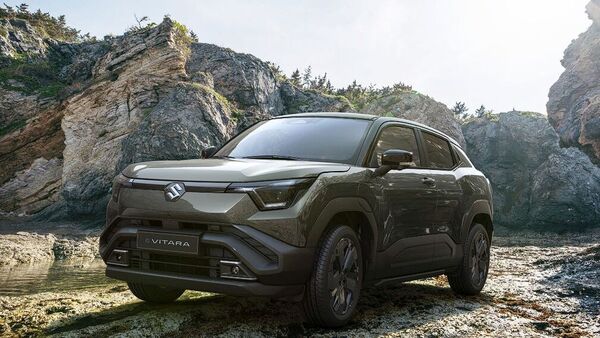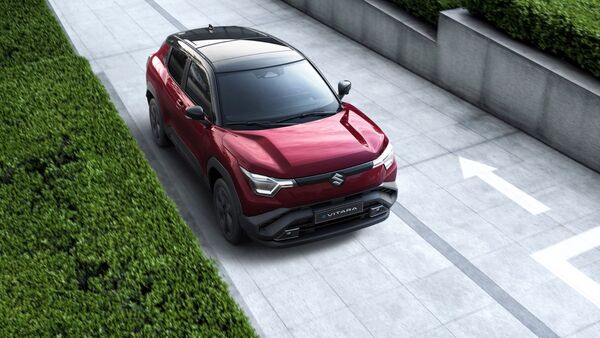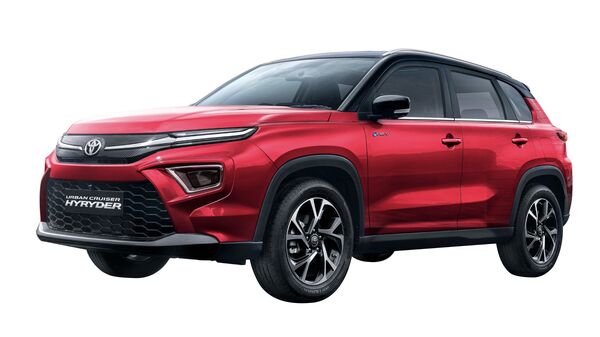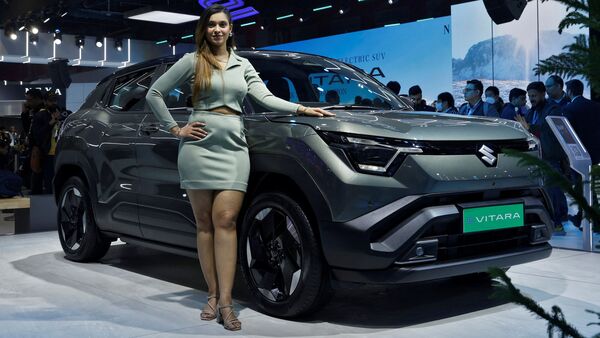
Maruti Suzuki’s e-Vitara: A turning point for the brand?
5 months ago | 5 Views
Maruti Suzuki’s much-awaited maiden EV offering has finally broken cover in Milan, delighting many and silencing critics in equal measure. It’s called the e Vitara – an electrified version of the Grand Vitara that is likely to be priced between ₹21 to 30 lakh. With EV incumbents like Tata Motors having taken such a lead, where does that put Maruti Suzuki in the EV hierarchy?
Compared to the likes of Tata Motors, which aims to go all-electric by 2030, Maruti Suzuki has taken the opposite approach, taking its time with electrification while bolstering its portfolio with high-margin and comparatively premium offerings like the Grand Vitara and the Innova Hycross based Invicto. While the latter has seen steady decline in sales, the former has emerged as a best-seller in the compact SUV segment.
Fashionably late or timely entry?
The e-Vitara is expected to be launched in 2025, a year that will see a huge influx of EVs particularly in the mass market segment, from several manufacturers. From Hyundai and Kia’s homegrown EV offerings to Mahindra’s own slew of EVs starting with the XEV 9e and BE 6e that are scheduled for launch later this year – the horizon is chock full of EVs. In fact, Auto Expo 2025 will see the highest roll out of EVs in its history.Tata's own born-electric Avinya is also scheduled for launch in mid-2025.
With the hybrid segment having witnessed a surge in growth, Maruti Suzuki isn’t entirely rudderless in navigating the choppy seas that lead to net zero carbon emissions. Until there’s greater policy consistency with regards to EV rebates, Maruti had better continue to mine Toyota’s hybrid-tech to remain one of the segment leaders. Another advantage that the brand has is its expansive service network. With a lot of Tier II and III cities opting for premium offerings, Maruti Suzuki’s country-wide after sales network could be a potential differentiator, even though EVs do not need as much upkeep and have far fewer moving parts.
Key Challenges for Maruti Suzuki
As a brand that has had first-mover advantage for an overwhelmingly large period of India’s car manufacturing history, Maruti Suzuki does find itself on the backfoot for the first time, when it comes to the EV segment. Despite showcasing what looks like a promising product, Maruti Suzuki’s share value remains unaffected, having fallen by 13 per cent in a single month on account of poor second quarter sales.
However, the e-Vitara appears to be anything but an afterthought. Unlike Tata Motors and Mahindra who based their initial slew of EVs on existing ICE vehicles, Maruti has opted for a pure electric HEARTECT-e platform that’s modular and designed to be lightweight and efficient while also allowing for greater interior space. On paper it’s more powerful than even the Curvv, with battery options ranging from 41 kWh for the 2WD version and 61 kWh for the dual motor setup. The top-end AWD version even has a nifty mode that mimics a limited slip differential, although it's unlikely that off-roading enthusiasts will take to an EV.

The challenge however, would be pricing. The brand has mentioned in the past how battery prices were a key factor in delaying its EV offensive. The brand’s highest priced product – the Invicto – has been its poorest performer thus far, witnessing a 70.4 per cent decline in August 2024. This despite the fact that its twin, the Toyota Innova Hycross continues to see steady sales, commanding a waiting period of up to 35 weeks. Historically, Maruti has had a difficult run at selling its top-end models, such as the Kizashi owing to brand perception. The Jimny, although much cheaper, was a similar attempt at creating a recreational, off-road vehicle that ultimately did not work as expected.
Maruti Suzuki can opt for the battery subscription route, however battery subscription is a feasible model primarily for entry-level EV with a sub-300 km range with a four-year ownership plan. As things stand the base level price for 2WD e-Vitara, with a 41 kWh battery, is unlikely to justify a relatively short-term battery subscription plan. Unlike most manufacturers who assemble battery packs in India, Maruti Suzuki will import the entire battery pack, which will undoubtedly drive-up the price.
Furthermore, the brand has taken a huge hit in recent times when it comes to its safety credentials, something that affected its overall brand equity as consumers give increasing preference to crash safety ratings. Although the Grand Vitara is rumoured to have been crash tested by Bharat NCAP, it is yet to be allotted an official safety rating. Even if the rating is high, Maruti Suzuki has a long way to go in establishing itself as a maker of safe cars, across the price spectrum. At the moment, five of its cars are scheduled for a Bharat NCAP test including the Swift, WagonR, Alto K10 and the S-Presso – cars which have historically had a woeful crash safety record. Although it in no way reflects the crash worthiness of a born electric, built-from scratch product like the e-Vitara, the overall perception does set Maruti Suzuki when it comes to getting customers to purchasing its top-end products. With the entry-level segment, where it continues to have total dominance continuing to shrink, Maruti Suzuki is betting big on premiumisation, and its biggest leap yet – the Invicto, hasn’t yielded positive results.
As a standalone product, the e-Vitara seems very promising and is unlikely to disappoint. India’s electric vehicle sector has suffered not because of poor products, as there is far greater homogeneity in the EV segment than there has been in ICE products. The two key challenges are in acquisition costs and residual value, and the e-Vitara is unlikely to be a gamechanger with regards to either. Most manufacturers source battery packs from giants like CATL or BYD (Maruti Suzuki having opted for the latter). Tata Motors recently partnered-up with Octillion Power Systems India Private Limited – a subsidiary of the US-based Octillion power systems. Only a dramatic breakthrough in battery chemistry and performance is likely to give a manufacturer an edge in terms of range. In that sense, the proprietary lithium-ion phosphate battery provided by BYD, offers far greater durability thanks to being largely cobalt-free and offering greater thermal stability due to lithium-ion phosphate as its cathode material. As far as safety is concerned, the e-Vitara, jointly developed with Toyota and to be exported to Japan and Europe, might mark a turning point for the brand as far as safety is concerned.
The road ahead
Much will be determined by the policy framework of the upcoming FAME III scheme. If hybrids are incentivised, Maruti Suzuki is likely to find itself in a stronger position in the market, than it would through EV incentives alone. With five more EVs lined-up for launch till 2030-31, Maruti Suzuki EV market share will only increase. But for now, the advantage lies with the competition.
Read Also: EICMA 2024: Ultraviolette Concept X revealed, previews electric sports tourer
HOW DID YOU LIKE THIS ARTICLE? CHOOSE YOUR EMOTICON !
#



















